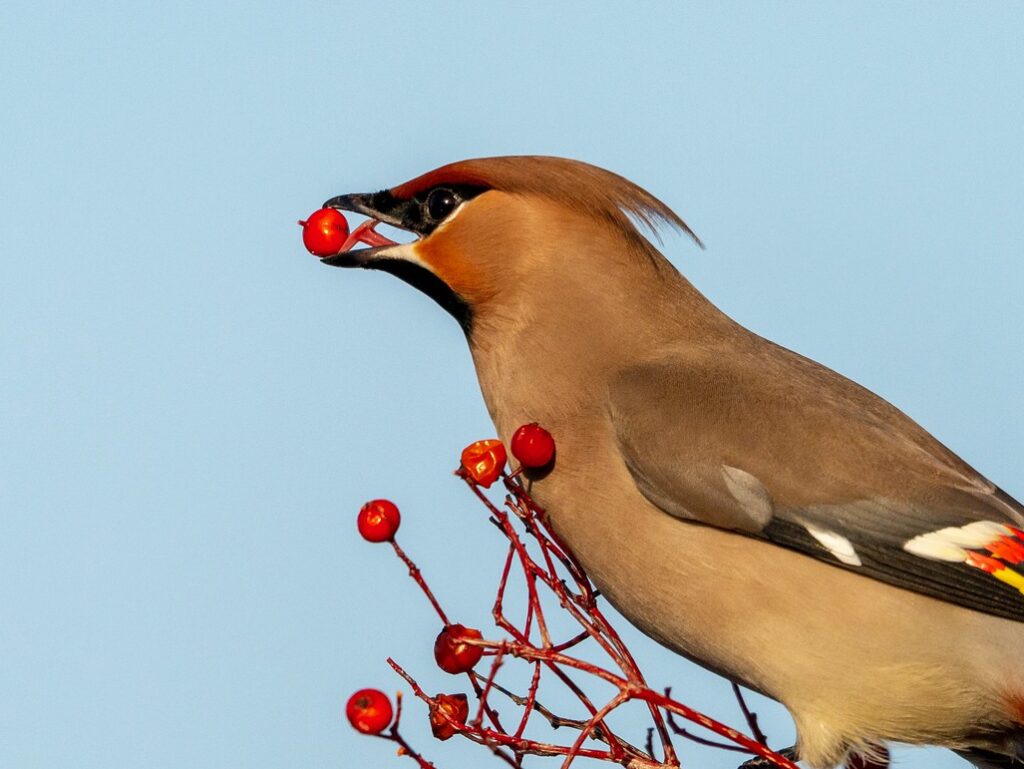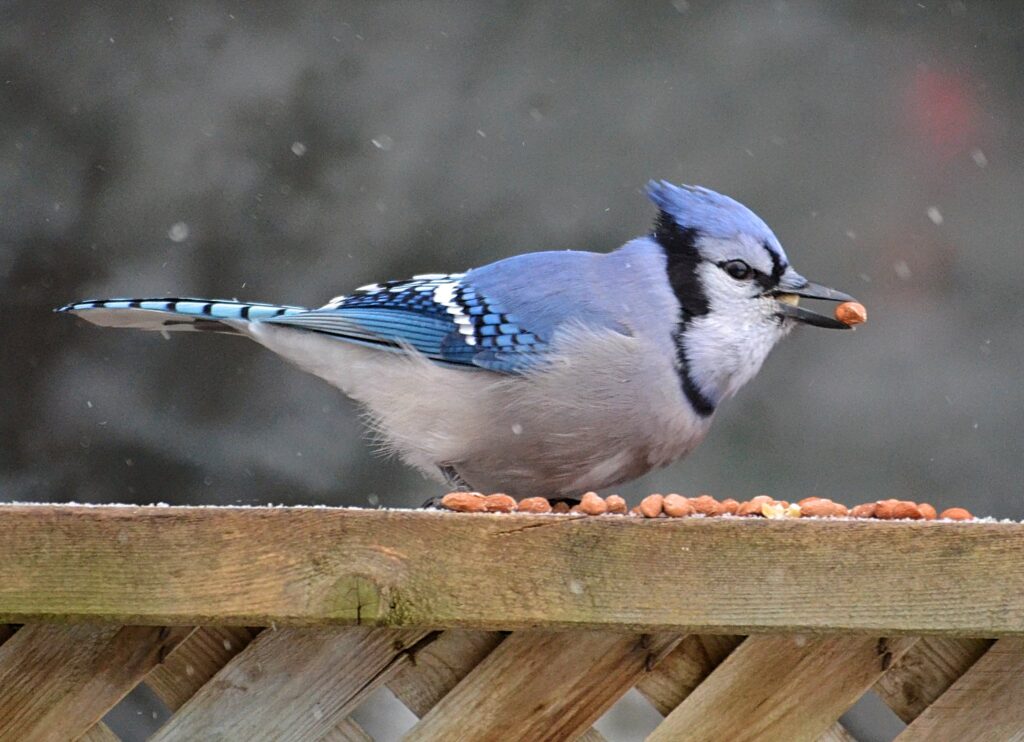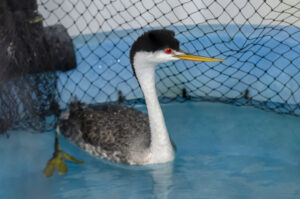By Jennea Frischke
After writing “Let’s Talk About Bird Tongues”, I’ve been so curious about other bird tongues. I covered three types of woodpecker tongues in that article (read here https://www.aiwc.ca/blog/lets-talk-about-bird-tongues/).
During my research, I learned that depending on what a bird eats and their habitat bird tongues have evolved and adapted into different shapes, sizes, and functions, and I can’t help but wonder: What are they hiding in that beak? And what special tricks does it do? I’m intrigued and must know.
This time I will focus on three birds I see in my neighbourhood: waxwings, great horned owls, and blue jays.
Some of my favourite birds are the cute and colourful cedar and Bohemian waxwings. I always get excited when I hear their little laser sounds in the area. We have mountain ash trees in our yard, and one of my favourite winter moments is when a flock of cedar waxwings descends on our yard, eating the frozen fermented berries, getting a little bit drunk. I always wondered how they got those plump hard berries down their throats without choking. And now I know! Their tongue has developed in such a way that it assists in pushing food down their throats!1
Both cedar and Bohemian waxwings have a fascinating arrowhead shaped tongue, allowing it to neatly rest on the floor of the lower bill. When eating, they lower the tongue and slide it past the berry in their mouth. The arrow head shaped part splays out into an arrowhead shape, helping pull the berry down their throat. Robins and some other song birds also have similar tongue shapes.1
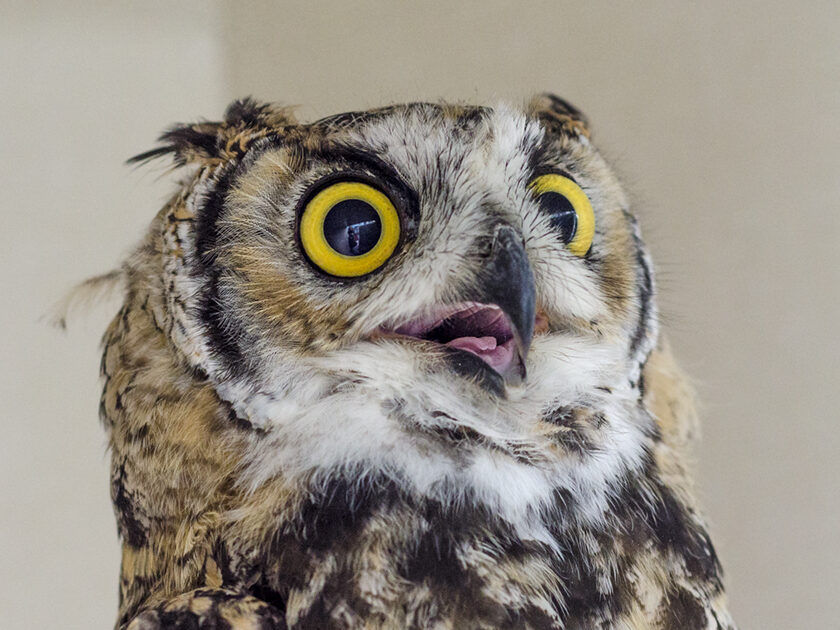
I don’t see great horned owls often, but do frequently find evidence they were around in what I refer to as owl gems – other people call them owl pellets. When I’m lucky I’ve seen them hunting in the area. They are carnivorous birds of prey, and eat all kinds of mammals, fish, and birds. Owls eat a lot of their prey whole when small enough, or in large chunks (their sharp beak is designed to tear up flesh), and they cannot digest the bones and fur. I’ve even been fortunate (and a little shocked) to watch an owl swallow back a full small rodent, which makes you wonder “how do they not choke?”
Owls have a short, almost cute little tongue, with a special apparatus just at the back of the tongue that protects them from choking. It’s called a glottis and it reflexively closes when touched, which prevents food from going into the lungs. This allows owls to regurgitate the indigestible bits from their digestive system. Other raptors have a similar apparatus under their tongues for the same reason.2 These indigestibles come up in grey compacted bundles, or pellets, and are the owl gems/pellets. To an untrained eye they can look like tree bark on the ground.
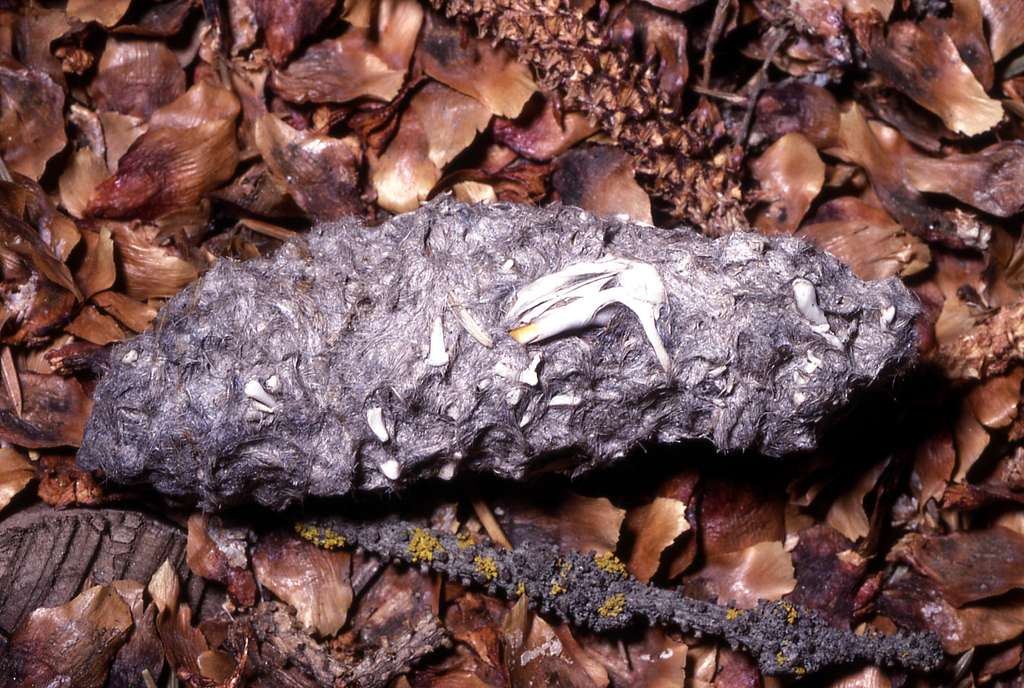
Blue jays have a tongue just under an inch long, mostly flat, with horny barbs toward the end, which assists in catching small insects and bugs. Blue jays are omnivores, and eat meat, seeds and berries.3 Their tongue also conceals a secret trick!
Underneath their tongue, they have a secret hatch called a gular pouch, where they can store additional food, such as acorns. This sac, which opens underneath the bird’s tongue, reaches down into the throat and upper oesophagus. They can fit approximately two large acorns in this pouch. This allows them to collect more food, as well as it helps in spreading seeds, therefore distributing different plant and tree species, among a greater area, helping with biodiversity! Their fondness for acorns is credited with helping spread oak trees after the last glacial period!4 Have you ever noticed that sometimes blue jays’ throats look distended? That’s the gular pouch. Once you’ve seen one, you’ll find they’re easy to pick out.5
I feel like three bird tongues at a time in an article is enough to digest: so there will be at least one more article on bird tongues! Duck tongues up next – they are all so strange and fascinating!
References
- https://blog.lauraerickson.com/2014/12/more-about-bird-tongues-than-normal.html?m=1
- https://www.owlresearchinstitute.org/single-post/ask-us-anything-great-horned-owl-live-cam#:~:text=The%20trachea%20is%20a%20small,from%20going%20into%20the%20lungs
- https://www.audubon.org/birds-of-america/blue-jay
- https://www.allaboutbirds.org/guide/Blue_Jay/overview
- https://www.stcnature.org/good-natured/blue-jays/


